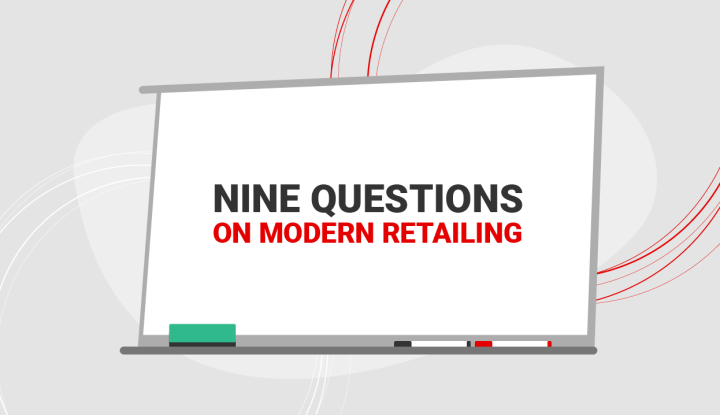In recent months, there has been a noticeable shift in the industry conversation around airlines’ transition to offer- and order-enabled retailing, with questions like ‘if’, ‘why’ and ‘when’ being replaced by ‘how’.
Many have already started along the transition path but there’s a long journey ahead. Airlines must be bold and make the necessary investments in retailing technology, skills, and fulfillment. At the same time, they must continue to deliver against the needs of their travelers today, in order to generate the much-needed incremental revenue to fund their future. In short, airlines must continue to perform even as they transform.
We’ve created a flexible, phased and financially durable transition path that is sustainable for all. One that enables airlines to realize additional revenue from day 1 as they set out on their transformation journey. Here are three ways airlines can unlock revenue along this path…
1. Science, not assumptions
Key to unlocking incremental revenue early in the transition process is dynamic and data-driven offer optimization: creating rich and personalized offers that better meet traveler needs, drive higher conversion and enhance loyalty.
Getting more offer-friendly to customers sets you down that path to generating revenue and starts building the appetite – and financial resources – for a new order management system. It’s a journey. It’s going to benefit customers, it’s going to bring in incremental revenue and overall it’s great for the industry.
Umesh Chhiber, SVP Revenue, Retail and Cargo, Oman Air
At °ÄÃÅÈýФÈýÂë, our offer optimization solutions employ advanced artificial intelligence and machine learning (AI/ML). Many of the most important departments in modern airlines use AI/ML technology at scale, including network planning, flight scheduling, pricing and revenue management, operations and crew planning, amongst others.
But AI/ML has come a long way in recent years, and the newest applications – including °ÄÃÅÈýФÈýÂë’s Retail Intelligence product suite – use a modern, cloud-based, microservices architecture with improved scalability and automation. Powered by °ÄÃÅÈýФÈýÂë Travel AI™, Retail Intelligence leverages Google’s class-leading technology to create compelling customer offers that deliver significant revenue opportunities for our airline partners looking to meet the needs of modern, retail-savvy travelers while maximizing conversions and developing a competitive edge.
Learn more about °ÄÃÅÈýФÈýÂë’s partnership with Google
2. Dynamic pricing and availability of airfares
Airline dynamic pricing is a term that has been used in many different contexts. At °ÄÃÅÈýФÈýÂë, we refer to dynamic pricing of airfares to describe an engine that can help airlines provide tailored offers to different customer segments, considering a carrier’s revenue management controls and data signals on the current competitive marketplace.
A close cousin to dynamic pricing is dynamic availability. With dynamic availability, rather than directly modifying the price amounts, an airline’s availability controls are updated (either by closing or opening booking classes). The airline’s ability to modify prices in real-time with dynamic pricing provides the maximum revenue performance, but today it is limited only to airline direct channels and NDC offers. On the other hand, dynamic availability changes can be applied across all GDS selling channels, so while the revenue performance of each change is slightly less, the total applicable sales base is larger. Thus, both approaches are used by airlines today.
Dynamic pricing involves moving away from traditional, static filed fares and instead provides the flexibility to charge any price at any point in time. The use of current competitive shopping data (amongst other things) allows airlines to fine-tune the actual prices to realize revenue performance that is above and beyond what is possible using only their revenue management system controls. In practice, this has been shown to provide up to 3% revenue gains.
These gains are incremental to what an airline realizes from its revenue management system, and they arise from more customized offer decisions, continuous price points instead of fare classes and the ability to manage prices with finer granularity. This finer-grained, continuous pricing also benefits travelers because they gain access to new price points that were previously unsupported. But don’t just take our word it, here’s what our customers are saying:
As an industry we are facing a rapid pace of change. We must realize every revenue opportunity in this volatile market environment, while delivering a world-class booking and travel experience to our customers. °ÄÃÅÈýФÈýÂë’s innovative Air Price IQ is a key driver in our move from static pricing to dynamically created personalized offers.
Jiri Marek, CEO, Air Serbia
Learn more about °ÄÃÅÈýФÈýÂë Air Price IQ™
3. Dynamic pricing of air ancillaries
One of the biggest trends in airline marketing over the past 10 years has been the strong and steady growth of ancillary sales for air travel. According to a , airline ancillary revenue trends since 2013 show an average estimated annual growth rate of more than 15%. Ancillary sales growth in this period arises from both individual ancillary sales (a la carte) and the proliferation of airline branded fare bundles.
As sales (and revenues) have increasingly shifted to ancillaries, the opportunities for more dynamic pricing with AI/ML technology have grown. Traditionally, airlines have relied on pre-defined, static pricing rules that limit the incremental revenue that can be generated through ancillaries. It no longer has to be that way. Dynamic pricing continually analyzes and optimizes pricing to seamlessly deliver targeted airline ancillary offers at scale.
°ÄÃÅÈýФÈýÂë Ancillary IQ™, part of the Retail Intelligence suite, uses embedded machine learning models which consider passenger, trip and marketplace insights to present intelligent and personalized airline ancillary products and bundles that travelers are most likely to purchase – including seats, bags, Wi-Fi, lounge passes or any other airline ancillary you sell.
In practice, our customers have seen incremental ancillary revenue gains of up to 10% from the use of AI/ML models for both dynamic price decreases and increases of ancillaries.
Having °ÄÃÅÈýФÈýÂë as our key technology partner helps us maintain our commitment to customers while continuing to grow our business. By adopting °ÄÃÅÈýФÈýÂë Ancillary IQ,we will be able to provide passengers with their preferred choices during the booking process across channels so they can create the unique experiences they want.
Renzo Mello, Former Director of Channels Sales, Gol Linhas Aereas
Learn more about °ÄÃÅÈýФÈýÂë Ancillary IQ™
The clock is ticking
The future of airline retailing is enabled by offers and orders and early movers stand to gain the most. °ÄÃÅÈýФÈýÂë offers a range of next-gen products that enable airlines to take meaningful steps towards modern retailing by creating dynamic and personalized offers for every customer – from NDC to our suite of Retail Intelligence products infused with the latest °ÄÃÅÈýФÈýÂë Travel AI™ technology.
We’ve been busy laying the technology foundations of an industry-leading modern retailing solution. We’re ready for what’s next. We invite you to join us on the transition journey as we redefine the airline technology landscape.
About the Author
Andrew Thorpe is part of the °ÄÃÅÈýФÈýÂë team exploring what the future of travel will look like and how airlines can succeed with offer- and order-enabled retailing.
Keep the lines of communication open
Be the first to know when we release new information on emerging technology, upgrading of existing systems, or updates to our point of view on the future of travel retail.











